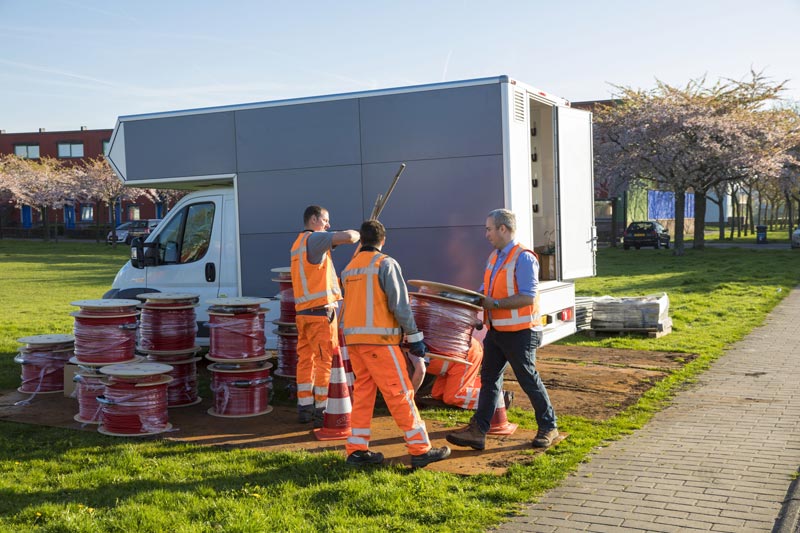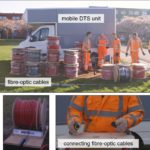Distributed temperature sensing (DTS) is a technique used to detect and locate illegal connections and extraneous inflows in sewer systems. It does this by using fibre-optic cables as very large temperature sensors.

These cables are installed in the sewer system and can each be several kilometres long. The DTS unit (laser/computer instrument) sends pulsed laser light into the fibre-optic cable and processes the reflected signals into temperature values. Temperature readings are typically obtained every 30 seconds for every 50 cm of cable. A common four-week campaign using 5 km of cable generates approximately 1010 (!) individual temperature readings. The abundance of data allows a very detailed assessment of the in-sewer processes that influence in-sewer temperatures, including illicit connections, infiltration and illicit industrial discharges.
Challenges
Illicit connections are incorrect connections between the sanitary sewage system and the storm sewer system, which lead to raw sewage discharges into the storm sewer and then to the receiving water body without treatment. In most cities, illicit connections are a significant source of pollution for surface waters. Illicit connections primarily arise due to unintentional errors during the construction of the sewer system or during renovations.
The main challenge in searching for illicit connections is the time and effort required to investigate large lengths of storm sewer systems. The search is like looking for a needle in a haystack: storm sewers are hundreds of kilometres in length, and discharge from illicit connections happens irregularly and intermittently. The number of illicit connections in an area is generally unknown, and can vary widely.
Limitations of current practices
Illicit connections are known to be an important contributor to the bacterial contamination of receiving water. However, there is no cost-effective and reliable method today for supporting utilities in tracking illicit connections for upgrading sewer network management and reducing environmental contamination.
Technologies currently used to search for illicit connections in sewer systems include CCTV sewer inspection (e.g. IBAK), colour marking of household effluents, smoke detection and Outfall Reconnaissance Inventory. however, these methods generally demonstrate poor accuracy for tracking illicit connections (i.e. have a small chance of actually finding and locating an illicit connection in an area) and require high operating expenditure due to the extensive operational staff resources needed.
Innovation

DTS is the only available technology that yields temperature readings with high spatial and temporal resolutions over a prolonged period of time (weeks) and with high precision. It allows a detailed view of all temperature-related processes inside an underground infrastructure, which are otherwise impossible to observe.
City tests
The solution is being demonstrated in Berlin in a separate sewer system catchment located in the central-western part of the city. The catchment has an area of 220 ha, a sewer length of 39 km, around 800 manholes and approximately 1,500 house connections. The settlement structure with 27,000 inhabitants shows a variety in population density and land use. DTS will be applied in a ‘hotspot’ zone within the catchment.
Contact solution
Partners4UrbanWater – Remy Schilperoort


